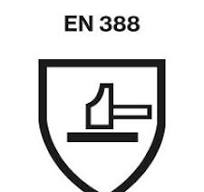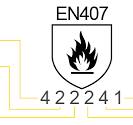
By Roger Munn 14/08/2016
Under: PPE and WorkwearPPE Focus: Safety Glove Best Practices
Handling injuries accounted for nearly three in ten incidents in this category. The impact of lost working days and litigation can be hugely damaging for businesses. It's time to up our game when it comes to hand protection.
Identify hazards
Before investing in equipment and training, tasks should be carefully assessed to identify the type of hazard.
Types of hazards that may require hand protection:
- Use of machinery/equipment
- Handling of sharp objects
- Exposure to liquids
- Chemical handling
- Use of abrasive materials
- Exposure to high or low temperatures
- Food handling
- Electrical handling
Match protection to hazard
Gloves differ significantly in their design and protection level. Once the hazard has been identified, the right equipment can be sourced for the job.
Mechanical Hazards

Look for the above symbol when buying gloves for mechanical risk protection. The symbol and coding system signify compliance with the EN388 standard. The highest possible scoring is 4.4.5.4.
Our Cutflex gloe range simplifies this scoring system into an easy to identify three colour code:
Chemical Hazards

The above symbol specifies a glove's capability to protect against chemical substances in accordance with the EN374 standard.
Heat Hazards

The above symbol and coding is the EN407 standard, signifying hand protection's performance against heat hazards. The highest possible scoring is 4.4.4.4.4.4.
Bear in mind that tasks may involve multiple hazards and will require safety wear with multiple protection.
Prioritise comfort and usability
Team members can be reluctant to wear gloves; comfortable protection which doesn't impair their ability to get the job done is much more likely to be worn. At Enfield Safety all our gloves are selected for their day long comfort and user dexterity.
Correct sizing is vital. Gloves which are too big can slip off and be tricky to work in. Gloves which are too tight can be uncomfortable, restrict movement and cause hands to fatigue quickly. Make sure to involve employees in the selection process and give a suitable range of sizing options. Address any concerns about sizing and comfort immediately.
If hands become sweaty while wearing gloves, safety and performance can be affected. Encouraging adequate breaks from wearing gloves is important, especially when working in hot conditions.
Communication is key
Signage is a good start - display a hazard sign by equipment requiring the use of safety gloves. Remember, however, that hand protection goes far beyond the glove itself; employees must be trained on how to use equipment and understand why they are being asked to wear gloves. Employees are much more likely to comply when they understand the consequences of what happens when they don't.
Explore our range of safety gloves.
Need advice? Speak to a member of our team today: 0333 003 5710

.jpg)
